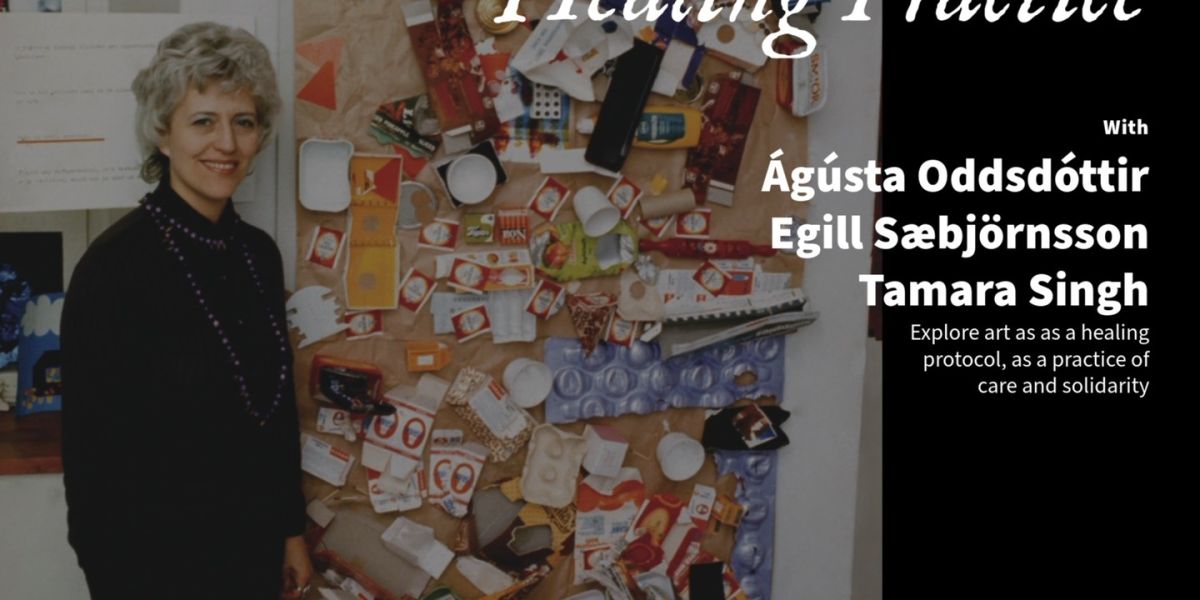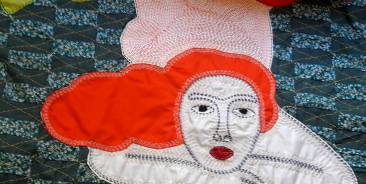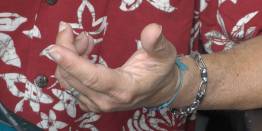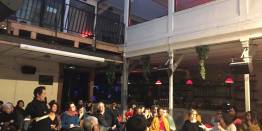Can art heal? The Initiative for Practices and Visions of Radical Care organized an event shaped by the dialogue between three artists, inspired by the book Art Can Heal: Life and Work of Sigríður Björnsdóttir, dedicated to the pioneer of art therapy, Sigríður Björnsdóttir. The Initiative invited sociologist, artist, and author of the book Ágústa Oddsdóttir, along with her son, visual artist Egill Sæbjörnsson, who interviewed Sigríður, and horticultural therapist and artist Tamara Singh for a discussion on the healing power of art. This event was part of the Initiative’s residency, « Care as Methodology, » at AWARE (Archives of Women Artists, Research, and Exhibitions).
L'art peut-il guérir ? L'Initiative For Practices and Visions of Radical Care a organisé un événement façonné par le dialogue entre trois artistes inspiré du livre Art Can Heal: Life and Work of Sigríður Björnsdóttir, consacré à la pionnière de l'art-thérapie, Sigríður Björnsdóttir. L’Initiative a invité la sociologue, artiste et auteure du livre Ágústa Oddsdóttir, ainsi que son fils et artiste visuel, Egill Sæbjörnsson qui a interview Sigríður, et enfin la thérapeute horticole, et artiste Tamara Singh, pour une discussion autour du pouvoir guérisseur de l’art. Cet événement s’inscrit dans le cadre de la résidence « Care as Methodology » de l’Initiative chez AWARE (Archives of Women Artists, Research, and Exhibitions).
Founded in 2020 in the Greater Paris area, the Initiative for Practices and Visions of Radical Care is a diverse group of practitioners in arts, crafts, philosophy, healing, and therapy from various geographical backgrounds. Neither a traditional collective nor a rigid structure, the Initiative explores and reinvents sustainable forms of institutionalism. Rooted in friendships as well as professional connections, it functions as an ecosystem, fostering interdependence and solidarity beyond identities.Founded in 2020 in the Greater Paris area, the Initiative for Practices and Visions of Radical Care is a diverse group of practitioners in arts, crafts, philosophy, healing, and therapy from various geographical backgrounds. Neither a traditional collective nor a rigid structure, the Initiative explores and reinvents sustainable forms of institutionalism. Rooted in friendships as well as professional connections, it functions as an ecosystem, fostering interdependence and solidarity beyond identities.
As part of their « Care as Methodology » series at AWARE in December 2024, the Initiative organized a conversation with Ágústa Oddsdóttir, Egill Sæbjörnsson, and Tamara Singh on art as a healing practice, centered around Oddsdóttir’s book Art Can Heal: The Life and Work of Sigríður Björnsdóttir.
Fondée en 2020 dans la région du Grand Paris, l'Initiative pour les Pratiques et Visions de Care Radical est un groupe diversifié de praticiens des arts, de l'artisanat, des philosophies, de la guérison et de la thérapie, issus de géographies très variées. Ni un collectif classique ni une structure rigide, l'Initiative explore et réinvente des modes d'institutionnalisme durable. Fondée sur des amitiés ainsi que des liens professionnels, elle fonctionne comme un écosystème et favorise l'interdépendance et la solidarité au-delà des identités. Dans le cadre de leur série « Care as Methodology » à AWARE, en décembre 2024, l'Initiative a organisé une conversation avec Ágústa Oddsdóttir, Egill Sæbjörnsson et Tamara Singh sur l'art en tant que pratique de guérison, centrée sur le livre d'Oddsdóttir Art Can Heal: The Life and Work of Sigríður Björnsdóttir.
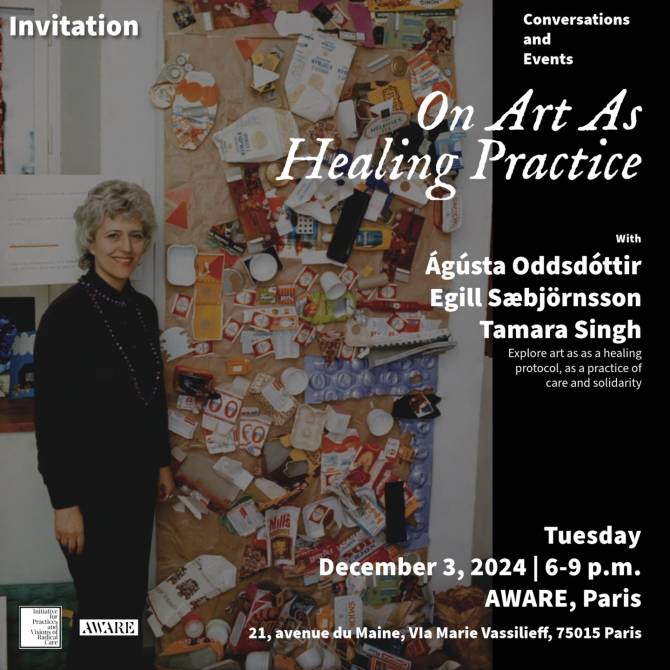
Since 1952, Icelandic-born artist Sigríður Björnsdóttir, life partner of Dieter Roth, began developing art therapy methods to help hospitalized children process and connect with their emotions. Many of these children had experienced trauma, and her approach emphasized free expression and play, without judgment or interpretation. Sigríður simply placed a variety of materials in front of the children and encouraged them to touch, engage, and create however they wished. Over the course of her career, she lectured worldwide and organized exhibitions showcasing her innovative methods.
Visual artist Egill Sæbjörnsson, who interviewed Sigríður, reflected on how deeply she valued children’s art. She believed that artistic creativity is innate in children and that healing occurs through creation. Egill recalled that she once said, « I cannot teach anything about art; they already have it within them. »
Depuis 1952, Sigríður Björnsdóttir, artiste d'origine islandaise et compagne de vie de Dieter Roth, a commencé à développer des méthodes de thérapie par l'art pour aider les enfants hospitalisés à traiter et à se connecter à leurs émotions. Beaucoup de ces enfants avaient vécu des traumatismes, et son approche mettait l'accent sur l'expression libre et le jeu, sans jugement ni interprétation. Sigríður plaçait simplement une variété de matériaux devant les enfants et les encourageait à toucher, à s'engager et à créer de la manière qu'iels désiraient. Au cours de sa carrière, elle a donné des conférences dans le monde entier et organisé des expositions sur ses méthodes novatrices. Egill Sæbjörnsson, artiste visuel et intervieweur de Sigríður, a réfléchi à la façon dont elle valorisait profondément l'art créé par les enfants. Elle croyait que la créativité artistique est innée chez les enfants et que la guérison se fait par la création ; Egil a remarqué qu'elle disait un jour : "Je ne peux rien enseigner sur l'art ; iels l'ont en eux."
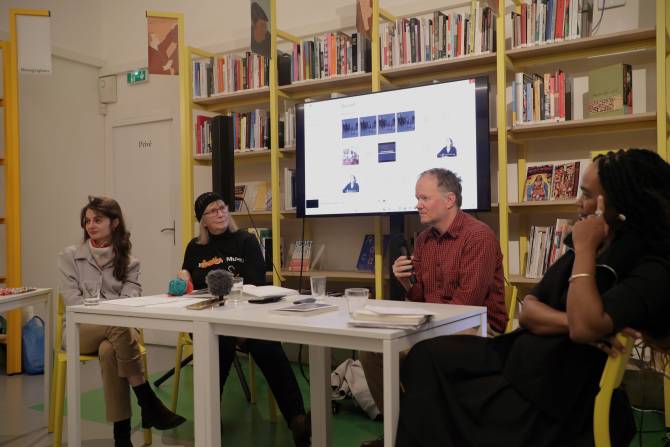
Joy and play were at the heart of Sigríður’s art therapy approach. Tamara Singh, a horticultural and art therapist, weaver, and artist, emphasized that art is not about limitations but about possibilities: Can we explore? Can we have fun? Can we create something new? She highlighted the importance of working with what people can do rather than focusing on their constraints, stressing that touch and play are essential to engaging in the artistic process. Every individual responds differently to materials, requiring a diverse exploration of mediums and methods in art therapy.
La joie et le jeu étaient au cœur de la démarche de Sigríður en art-thérapie. Tamara Singh, thérapeute horticole et artistique, tisserande et artiste, a insisté sur le fait que l’art n’est pas une question de limites mais de possibilités : Peut-on explorer ? Peut-on s’amuser ? Peut-on créer quelque chose de nouveau ? Elle a mis en avant l'importance de travailler avec ce que les gens peuvent faire plutôt que de se concentrer sur leurs contraintes, soulignant que le toucher et le jeu sont essentiels à l’engagement dans le processus artistique. Chaque personne réagit différemment aux matériaux, ce qui implique une exploration variée des supports et des méthodes en art-thérapie.
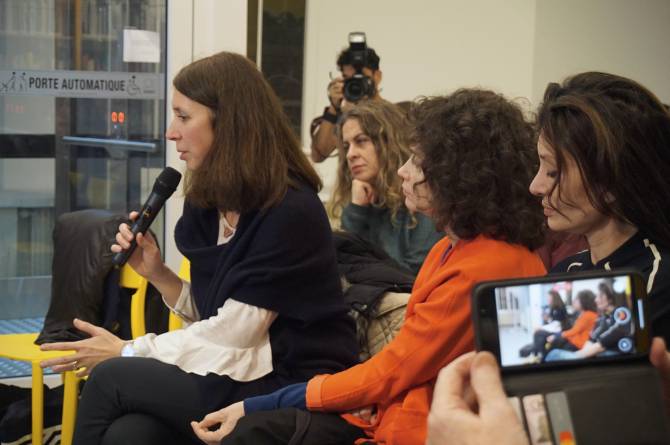
The central question of the event was: How does art heal? Ágústa Oddsdóttir, sociologist, artist, and author of the book, believes that art heals through invisible threads, which only became clear to her over time. Having participated in Sigríður’s art therapy sessions as a child to overcome her own wounds, she was inspired to study art and deepen her understanding of its capacity to connect and heal. For Tamara, this invisible healing process happens through the relationship with materials, which reflects and nourishes one’s relationship with oneself and others. Meanwhile, Egill explained that children’s artworks hold profound value - not as aesthetic objects within a capitalist framework, but as vital forms of self-expression.
La question de comment l’art guérit était centrale à l’événement. Ágústa Oddsdóttir, sociologue, artiste et auteure du livre, considère que l’art soigne à travers des fils invisibles qui ne lui sont apparus clairement qu’avec le temps. Ayant participé enfant aux séances d’art-thérapie de Sigríður pour surmonter ses propres blessures, elle a été inspirée pour étudier l’art et approfondir sa capacité à relier et à soigner. Pour Tamara, ce processus invisible de guérison passe par la relation aux matériaux, qui reflète et nourrit la relation à soi-même et aux autres. De son côté, Egill a expliqué que les œuvres des enfants avaient une valeur profonde, non pas en tant qu’objets esthétiques dans une logique capitaliste, mais comme formes vitales d’expression de soi.
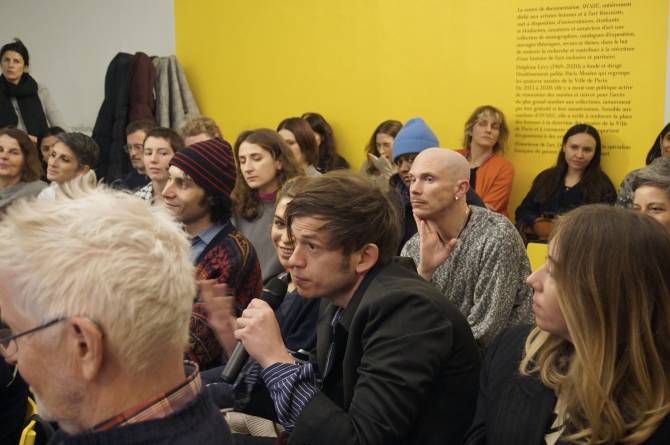
Ultimately, Sigríður carved open a path of what art could be at a time when its definition was being widely contested. This discussion thus opened a vision of art not as a finished product but as an ongoing process - a process that creates new spaces for connection, care, and the reinvention of possibilities. So, where might art open possibilities that we have yet to feel?
En somme, Sigríður a trouvé une brèche dans le mur des définitions de l’art, à un moment où celles-ci étaient largement remises en question. La discussion a ainsi ouvert une vision de l’art non pas comme un produit fini, mais comme un processus continu – un processus qui crée de nouveaux espaces de connexion, de soin et de réinvention du possible. Où alors l’art pourrait-il ouvrir des voies de guérison que nous ne percevons pas encore ?
Organized by: Initiative for Practices and Visions of Radical Care
Hosted by: AWARE (Archives of Women Artists, Research, and Exhibitions)
Based on the book: Art Can Heal: The Life and Work of Sigríður Björnsdóttir, written by Ágústa Oddsdóttir, published in 2023.
Speakers:
Ágústa Oddsdóttir – Sociologist, artist, and author of the book
Egill Sæbjörnsson – Visual artist, musician, and creator of architectural interventions
Tamara Singh – Mental health professional, horticultural and art therapist, artist, and member of the Initiative for Practices and Visions of Radical Care. Her work focuses on supporting marginalized people in France, emphasizing trust, joy, and play.
Moderated by simona dvorák (Initiative for Practices and Visions of Radical Care)
